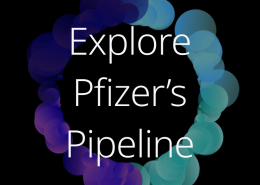FDA Approves Pfizer’s Biosimilar, RUXIENCE™ (rituximab-pvvr), for Certain Cancers and Autoimmune Conditions
Pfizer Inc. (NYSE:PFE) today announced the United States (U.S.) Food and Drug Administration (FDA) has approved RUXIENCE™ (rituximab-pvvr), a biosimilar to Rituxan® (rituximab),1 for the treatment of adult patients with non-Hodgkin’s lymphoma (NHL), chronic lymphocytic leukemia (CLL), and granulomatosis with polyangiitis (GPA) and microscopic polyangiitis (MPA).2
“Biosimilars like RUXIENCE have the potential to deliver real value in healthcare, improving access to and affordability of an important cancer treatment which could help more patients receive optimal care,” said Andy Schmeltz, Global President, Pfizer Oncology. “The FDA approval marks our third oncology biosimilar to be approved in the U.S. this year, reinforcing our commitment to bring these important medicines to patients living with cancer.”
The FDA approval was based on the review of a comprehensive data package, which demonstrated biosimilarity of RUXIENCE to the reference product. This includes results from the REFLECTIONS B3281006 clinical comparative study, which evaluated the efficacy, safety and immunogenicity, pharmacokinetics and pharmacodynamics of RUXIENCE and found no clinically meaningful differences in safety or efficacy compared to the reference product in patients with CD20-positive, low tumor burden follicular lymphoma.3
“Rituximab became one of the first monoclonal antibody (mAb) cancer treatments when it was initially approved by the FDA, representing a significant treatment advance and the only option available to oncologists and their patients for a period of time,” said Dr. Jeff Sharman, medical director, US Oncology Hematology Research. “With this FDA approval, clinicians have an additional treatment option that will help improve access to care for patients in need of anti-CD20 mAb therapy.”
Biosimilars have been a significant catalyst for change for the healthcare industry over the last decade, with the potential to create a more sustainable healthcare system. With more than 10 years of global in-market experience and seven approved biosimilar products in the U.S., Pfizer is proud to be a leader and at the forefront of this vital healthcare segment. RUXIENCE is Pfizer’s third oncology mAb biosimilar to be approved by the FDA this year.4,5 RUXIENCE has also been filed for regulatory approval with the European Medicines Agency (EMA) and is under review.
About RUXIENCE (rituximab-pvvr)
RUXIENCE is a mAb biosimilar to Rituxan which works by targeting a protein called CD20, which is present on the surface of B cells. When it attaches to CD20, rituximab helps destroy the B cells.2
RUXIENCEIMPORTANT SAFETY INFORMATION AND INDICATIONS
BOXED WARNINGS
(A) FATAL INFUSION-RELATED REACTIONS, (B) SEVERE MUCOCUTANEOUS REACTIONS, (C) HEPATITIS B VIRUS REACTIVATION, (D) PROGRESSIVE MULTIFOCAL LEUKOENCEPHALOPATHY
(A) Infusion-Related Reactions: Rituximab product administration can result in serious, including fatal, infusion-related reactions. Deaths within 24 hours of rituximab infusion have occurred. Approximately 80% of fatal infusion-related reactions occurred in association with the first infusion. Monitor patients closely. Discontinue RUXIENCE infusion for severe reactions and provide medical treatment for Grade 3 or 4 infusion-related reactions
(B) Severe Mucocutaneous Reactions: Severe, including fatal, mucocutaneous reactions can occur in patients receiving rituximab products. Discontinue RUXIENCE in patients who experience a severe mucocutaneous reaction. The safety of readministration of RUXIENCE to patients with severe mucocutaneous reactions has not been determined
(C) Hepatitis B Virus (HBV) Reactivation: HBV reactivation can occur in patients treated with rituximab products, in some cases resulting in fulminant hepatitis, hepatic failure, and death. Screen all patients for HBV infection before treatment initiation, and monitor patients during and after treatment with RUXIENCE. Discontinue RUXIENCE and concomitant medications in the event of HBV reactivation
(D) Progressive Multifocal Leukoencephalopathy (PML), including fatal PML, can occur in patients receiving rituximab products. Discontinue RUXIENCE and consider discontinuation or reduction of any concomitant chemotherapy or immunosuppressive therapy in patients who develop PML
Infusion-Related Reactions (IRR)
- Rituximab products can cause severe, including fatal, infusion-related reactions. Severe reactions typically occurred during the first infusion with time to onset of 30–120 minutes
- Rituximab product−induced infusion-related reactions and sequelae include urticaria, hypotension, angioedema, hypoxia, bronchospasm, pulmonary infiltrates, acute respiratory distress syndrome, myocardial infarction, ventricular fibrillation, cardiogenic shock, anaphylactoid events, or death
- Premedicate patients with an antihistamine and acetaminophen prior to dosing. Institute medical management (e.g., glucocorticoids, epinephrine, bronchodilators, or oxygen) for infusion-related reactions as needed. Depending on the severity of the infusion-related reaction and the required interventions, temporarily or permanently discontinue RUXIENCE. Resume infusion at a minimum 50% reduction in rate after symptoms have resolved
- Closely monitor the following patients: those with preexisting cardiac or pulmonary conditions, those who experienced prior cardiopulmonary adverse reactions, and those with high numbers of circulating malignant cells (≥25,000/mm3)
Severe Mucocutaneous Reactions
- Mucocutaneous reactions, some with fatal outcome, can occur in patients treated with rituximab products. These reactions include paraneoplastic pemphigus, Stevens-Johnson syndrome, lichenoid dermatitis, vesiculobullous dermatitis, and toxic epidermal necrolysis
- The onset of these reactions has been variable and includes reports with onset on the first day of rituximab exposure. Discontinue RUXIENCE in patients who experience a severe mucocutaneous reaction. The safety of readministration of rituximab products to patients with severe mucocutaneous reactions has not been determined
Hepatitis B Virus Reactivation (HBV)
- HBV reactivation, in some cases resulting in fulminant hepatitis, hepatic failure, and death, can occur in patients treated with drugs classified as CD20-directed cytolytic antibodies, including rituximab products. Cases have been reported in patients who are hepatitis B surface antigen (HBsAg) positive and also in patients who are HBsAg negative but are hepatitis B core antibody (anti-HBc) positive. Reactivation has also occurred in patients who appear to have resolved hepatitis B infection (i.e., HBsAg negative, anti-HBc positive, and hepatitis B surface antibody [anti-HBs] positive)
- HBV reactivation is defined as an abrupt increase in HBV replication manifesting as a rapid increase in serum HBV DNA level or detection of HBsAg in a person who was previously HBsAg negative and anti-HBc positive. Reactivation of HBV replication is often followed by hepatitis, i.e., increase in transaminase levels. In severe cases, increase in bilirubin levels, liver failure, and death can occur
- Screen all patients for HBV infection by measuring HBsAg and anti-HBc before initiating treatment with RUXIENCE. For patients who show evidence of prior hepatitis B infection (HBsAg positive [regardless of antibody status] or HBsAg negative but anti-HBc positive), consult with physicians with expertise in managing hepatitis B regarding monitoring and consideration for HBV antiviral therapy before and/or during RUXIENCE treatment
- Monitor patients with evidence of current or prior HBV infection for clinical and laboratory signs of hepatitis or HBV reactivation during and for several months following RUXIENCE therapy. HBV reactivation has been reported up to 24 months following completion of rituximab therapy
- In patients who develop reactivation of HBV while on RUXIENCE, immediately discontinue RUXIENCE and any concomitant chemotherapy, and institute appropriate treatment. Insufficient data exist regarding the safety of resuming rituximab product treatment in patients who develop HBV reactivation. Resumption of RUXIENCE treatment in patients whose HBV reactivation resolves should be discussed with physicians with expertise in managing HBV
Progressive Multifocal Leukoencephalopathy (PML)
- John Cunningham (JC) virus infection resulting in progressive multifocal leukoencephalopathy (PML) and death can occur in rituximab product-treated patients with hematologic malignancies or with autoimmune diseases. The majority of patients with hematologic malignancies diagnosed with PML received rituximab in combination with chemotherapy or as part of a hematopoietic stem cell transplant. Most cases of PML were diagnosed within 12 months of their last infusion of rituximab
- Consider the diagnosis of PML in any patient presenting with new-onset neurologic manifestations. Evaluation of PML includes, but is not limited to, consultation with a neurologist, brain MRI, and lumbar puncture. Discontinue RUXIENCE and consider discontinuation or reduction of any concomitant chemotherapy or immunosuppressive therapy in patients who develop PML
Tumor Lysis Syndrome (TLS)
- Acute renal failure, hyperkalemia, hypocalcemia, hyperuricemia, or hyperphosphatemia from tumor lysis, some fatal, can occur within 12–24 hours after the first infusion of RUXIENCE in patients with non-Hodgkin’s lymphoma (NHL). A high number of circulating malignant cells (≥25,000/mm3), or high tumor burden, confers a greater risk of TLS
- Administer aggressive intravenous hydration and anti-hyperuricemic therapy in patients at high risk for TLS. Correct electrolyte abnormalities, monitor renal function and fluid balance, and administer supportive care, including dialysis as indicated
Infections
- Serious, including fatal, bacterial, fungal, and new or reactivated viral infections can occur during and following the completion of rituximab product-based therapy. Infections have been reported in some patients with prolonged hypogammaglobulinemia (defined as hypogammaglobulinemia >11 months after rituximab exposure)
- New or reactivated viral infections included cytomegalovirus, herpes simplex virus, parvovirus B19, varicella zoster virus, West Nile virus, and hepatitis B and C. Discontinue RUXIENCE for serious infections and institute appropriate anti-infective therapy
- RUXIENCE is not recommended for use in patients with severe, active infections
Cardiovascular Adverse Reactions
- Cardiac adverse reactions, including ventricular fibrillation, myocardial infarction, and cardiogenic shock, may occur in patients receiving rituximab products. Discontinue infusions for serious or life-threatening cardiac arrhythmias. Perform cardiac monitoring during and after all infusions of RUXIENCE for patients who develop clinically significant arrhythmias, or who have a history of arrhythmia or angina
Renal Toxicity
- Severe, including fatal, renal toxicity can occur after rituximab product administration in patients with NHL. Renal toxicity has occurred in patients who experience TLS and in patients with NHL administered concomitant cisplatin therapy during clinical trials. The combination of cisplatin and RUXIENCE is not an approved treatment regimen. Monitor closely for signs of renal failure and discontinue RUXIENCE in patients with a rising serum creatinine or oliguria
Bowel Obstruction and Perforation
- Abdominal pain, bowel obstruction, and perforation, in some cases leading to death, can occur in patients receiving rituximab products in combination with chemotherapy. In postmarketing reports, the mean time to documented gastrointestinal perforation was 6 (range 1–77) days in patients with NHL. Evaluate if symptoms of obstruction such as abdominal pain or repeated vomiting occur
Immunization
- The safety of immunization with live viral vaccines following rituximab product therapy has not been studied, and vaccination with live virus vaccines is not recommended before or during treatment
Embryo-Fetal Toxicity
- Based on human data, rituximab products can cause fetal harm due to B-cell lymphocytopenia in infants exposed in utero. Advise pregnant women of the risk to a fetus. Females of childbearing potential should use effective contraception while receiving RUXIENCE and for 12 months following the last dose of RUXIENCE
Concomitant Use with Other Biologic Agents and Disease Modifying Antirheumatic Drugs (DMARDs) in Granulomatosis with Polyangiitis (GPA) (Wegener’s Granulomatosis) and Microscopic Polyangiitis (MPA)
- Observe patients closely for signs of infection if biologic agents and/or DMARDs are used concomitantly. Use of concomitant immunosuppressants other than corticosteroids has not been studied in GPA or MPA patients exhibiting peripheral B-cell depletion following treatment with RUXIENCE
Adverse Reactions
- The most common Grade 3 or 4 adverse reactions in clinical trials of NHL and chronic lymphocytic leukemia (CLL) were infusion-related reactions, neutropenia, leukopenia, anemia, thrombocytopenia, and infections. Additionally, lymphopenia and lung disorder were seen in NHL trials; and febrile neutropenia, pancytopenia, hypotension, and hepatitis B were seen in CLL trials
- The most common adverse reactions (incidence ≥25%) in clinical trials of NHL and CLL were infusion-related reactions. Additionally, fever, lymphopenia, chills, infection, and asthenia were seen in NHL trials; and neutropenia was seen in CLL trials
Nursing Mothers
- There are no data on the presence of rituximab products in human milk, the effect on the breastfed child, or the effect on milk production. Since many drugs, including antibodies, are present in human milk, advise a lactating woman not to breastfeed during treatment and for at least 6 months after the last dose of RUXIENCE, due to the potential for serious adverse reactions in breastfed infants
Clinical Trials Experience in GPA and MPA
- Adverse reactions reported in ≥15% of rituximab-treated patients were infections, nausea, diarrhea, headache, muscle spasms, anemia, and peripheral edema (other important adverse reactions include infusion-related reactions)
Induction Treatment of Patients With Active GPA/MPA (GPA/MPA Study 1)
Infusion-Related Reactions
- In GPA/MPA Study 1, 12% vs 11% (rituximab-treated vs cyclophosphamide-treated, respectively) of patients experienced at least one infusion-related reaction. Infusion-related reactions included cytokine release syndrome, flushing, throat irritation, and tremor. In the rituximab group, the proportion of patients experiencing an infusion reaction was 12%, 5%, 4%, and 1% following the first, second, third, and fourth infusions, respectively. Patients were premedicated with antihistamine and acetaminophen before each rituximab infusion and were on background oral corticosteroids, which may have mitigated or masked an infusion-related reaction; however, there is insufficient evidence to determine whether premedication diminishes the frequency or severity of infusion-related reactions
Infections
- In GPA/MPA Study 1, 62% vs 47% (rituximab-treated vs cyclophosphamide-treated, respectively) of patients experienced an infection by Month 6. The most common infections in the rituximab group were upper respiratory tract infections, urinary tract infections, and herpes zoster. The incidence of serious infections was 11% vs 10% (rituximab-treated vs cyclophosphamide-treated, respectively), with rates of approximately 25 and 28 per 100 patient-years, respectively. The most common serious infection was pneumonia
Hypogammaglobulinemia
- Hypogammaglobulinemia (IgA, IgG, or IgM below the lower limit of normal) has been observed in patients with GPA and MPA treated with rituximab in GPA/MPA Study 1. At 6 months, in the rituximab group, 27%, 58%, and 51% of patients with normal immunoglobulin levels at baseline had low IgA, IgG, and IgM levels, respectively, compared to 25%, 50%, and 46% in the cyclophosphamide group
Immunogenicity
- A total of 23/99 (23%) rituximab-treated patients with GPA or MPA tested positive for anti-rituximab antibodies by 18 months in GPA/MPA Study 1. The clinical relevance of anti-rituximab antibody formation in RUXIENCE-treated patients is unclear
Treatment of Patients With GPA/MPA Who Have Achieved Disease Control With Induction Treatment (GPA/MPA Study 2)
- In GPA/MPA Study 2, the safety profile was consistent with the known safety profile of rituximab in immunologic indications
Infusion-Related Reactions (IRR)
- In GPA/MPA Study 2, 7/57 (12%) patients in the non-US-licensed approved rituximab arm reported infusion-related reactions. The incidence of IRR symptoms was highest during or after the first infusion (9%) and decreased with subsequent infusions (<4%). One patient had two serious IRRs; two IRRs led to a dose modification; and no IRRs were severe, fatal, or led to withdrawal from the study
Infections
- In GPA/MPA Study 2, 30/57 (53%) patients in the non-US-licensed approved rituximab arm and 33/58 (57%) in the azathioprine arm reported infections. The incidence of all-grade infections was similar between the arms. The incidence of serious infections was similar in both arms (12%). The most commonly reported serious infection in the group was mild or moderate bronchitis
INDICATIONS
- Non-Hodgkin’s Lymphoma (NHL)
RUXIENCE (rituximab-pvvr) is indicated for the treatment of adult patients with:- Relapsed or refractory, low-grade or follicular, CD20-positive, B-cell NHL as a single agent
- Previously untreated follicular, CD20-positive, B-cell NHL in combination with first-line chemotherapy and, in patients achieving a complete or partial response to a rituximab product in combination with chemotherapy, as single-agent maintenance therapy
- Non-progressing (including stable disease), low-grade, CD20-positive, B-cell NHL, as a single agent after first-line cyclophosphamide, vincristine, and prednisone (CVP) chemotherapy
- Previously untreated diffuse large B-cell, CD20-positive NHL in combination with cyclophosphamide, doxorubicin, vincristine, prednisone (CHOP) or other anthracycline-based chemotherapy regimens
- Chronic Lymphocytic Leukemia (CLL)
- In combination with fludarabine and cyclophosphamide (FC), for the treatment of adult patients with previously untreated and previously treated CD20-positive CLL
- Granulomatosis with Polyangiitis (GPA) (Wegener’s Granulomatosis) and Microscopic Polyangiitis (MPA) in adult patients in combination with glucocorticoids
Attention Healthcare Provider: Provide Medication Guide to patients prior to RUXIENCE infusion and advise patients to read guide.
To report SUSPECTED ADVERSE REACTIONS, contact Pfizer Inc. at 1-800-438-1985 or FDA at 1-800-FDA-1088 or www.fda.gov/medwatch.com.
Please see full Prescribing Information for RUXIENCE (rituximab-pvvr), including BOXED WARNING.
About Pfizer Oncology
At Pfizer Oncology, we are committed to advancing medicines wherever we believe we can make a meaningful difference in the lives of patients. Today, Pfizer Oncology has an industry-leading portfolio of 19 approved innovative cancer medicines and biosimilars across more than 30 indications, including breast, prostate, kidney, lung and hematology. Pfizer Oncology is striving to change the trajectory of cancer.
Breakthroughs that change patients’ lives
At Pfizer, we apply science and our global resources to bring therapies to people that extend and significantly improve their lives. We strive to set the standard for quality, safety and value in the discovery, development and manufacture of health care products. Our global portfolio includes medicines and vaccines as well as many of the world's best-known consumer health care products. Every day, Pfizer colleagues work across developed and emerging markets to advance wellness, prevention, treatments and cures that challenge the most feared diseases of our time. Consistent with our responsibility as one of the world's premier innovative biopharmaceutical companies, we collaborate with health care providers, governments and local communities to support and expand access to reliable, affordable health care around the world. For more than 150 years, we have worked to make a difference for all who rely on us. We routinely post information that may be important to investors on our website at www.pfizer.com. In addition, to learn more, please visit us on www.pfizer.com and follow us on Twitter at @Pfizer and @Pfizer_News, LinkedIn, YouTube and like us on Facebook at Facebook.com/Pfizer.
DISCLOSURE NOTICE: The information contained in this release is as of July 23, 2019. Pfizer assumes no obligation to update forward-looking statements contained in this release as the result of new information or future events or developments.
This release contains forward-looking information about RUXIENCE (rituximab-pvvr), including its potential benefits, that involves substantial risks and uncertainties that could cause actual results to differ materially from those expressed or implied by such statements. Risks and uncertainties include, among other things, uncertainties regarding the launch timing and commercial success of RUXIENCE in the United States; the uncertainties inherent in research and development, including the ability to meet anticipated clinical endpoints, commencement and/or completion dates for our clinical trials, regulatory submission dates, regulatory approval dates and/or launch dates, as well as the possibility of unfavorable new clinical data and further analyses of existing clinical data; the risk that clinical trial data are subject to differing interpretations and assessments by regulatory authorities; whether regulatory authorities will be satisfied with the design of and results from our clinical studies; whether and when applications for RUXIENCE may be filed in any other jurisdictions; whether and when any such other applications for RUXIENCE that may be pending (including the application pending in Europe) or filed may be approved by regulatory authorities, which will depend on myriad factors, including making a determination as to whether the product’s benefits outweigh its known risks and determination of the product’s efficacy and, if approved, whether RUXIENCE will be commercially successful; intellectual property and/or litigation implications;decisions by regulatory authorities impacting labeling, manufacturing processes, safety and/or other matters that could affect the availability or commercial potential of RUXIENCE; uncertainties regarding access challenges for our biosimilar products where our product may not receive appropriate formulary access or remains in a disadvantaged position relative to the innovator product; and competitive developments.
A further description of risks and uncertainties can be found in Pfizer’s Annual Report on Form 10-K for the fiscal year ended December 31, 2018 and in its subsequent reports on Form 10-Q, including in the sections thereof captioned “Risk Factors” and “Forward-Looking Information and Factors That May Affect Future Results”, as well as in itssubsequent reports on Form 8-K, all of which are filed with the U.S. Securities and Exchange Commission and available at www.sec.gov and www.pfizer.com.
_________________________________
1 Rituxan® is a registered trademark of Genentech, Inc.
2 RUXIENCE™ (rituximab-pvvr) Prescribing Information. New York. NY: Pfizer Inc: 2019. Available at https://www.accessdata.fda.gov/drugsatfda_docs/label/2019/761103s000lbl.pdf. Accessed July 2019.
3 Sharman J, et al. A Randomized, Double-Blind Efficacy and Safety Study of PF-05280586 (a Potential Rituximab Biosimilar) Compared with Rituximab Reference Product (MabThera®) in Subjects with Previously Untreated CD20-Positive, Low Tumor Burden Follicular Lymphoma (LTB-FL). Blood. 2018; 132:394. Available at http://www.bloodjournal.org/content/132/Suppl_1/394?sso-checked=true.
4 TRAZIMERA™ (trastuzumab-qyyp) Prescribing Information. New York. NY: Pfizer Inc: 2019. Available at https://www.accessdata.fda.gov/drugsatfda_docs/label/2019/761081s000lbl.pdf. Accessed July 2019.
5 ZIRABEV™ (bevacizumab-bvzr) Prescribing Information. New York. NY: Pfizer Inc: 2019. Available at http://labeling.pfizer.com/ShowLabeling.aspx?id=11860. Accessed July 2019.
Media:
Jessica Smith
+1 (212) 733-6213
[email protected]
Investors:
Ryan Crowe
+1 (212) 733-8160
[email protected]








